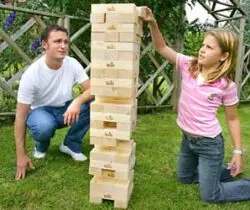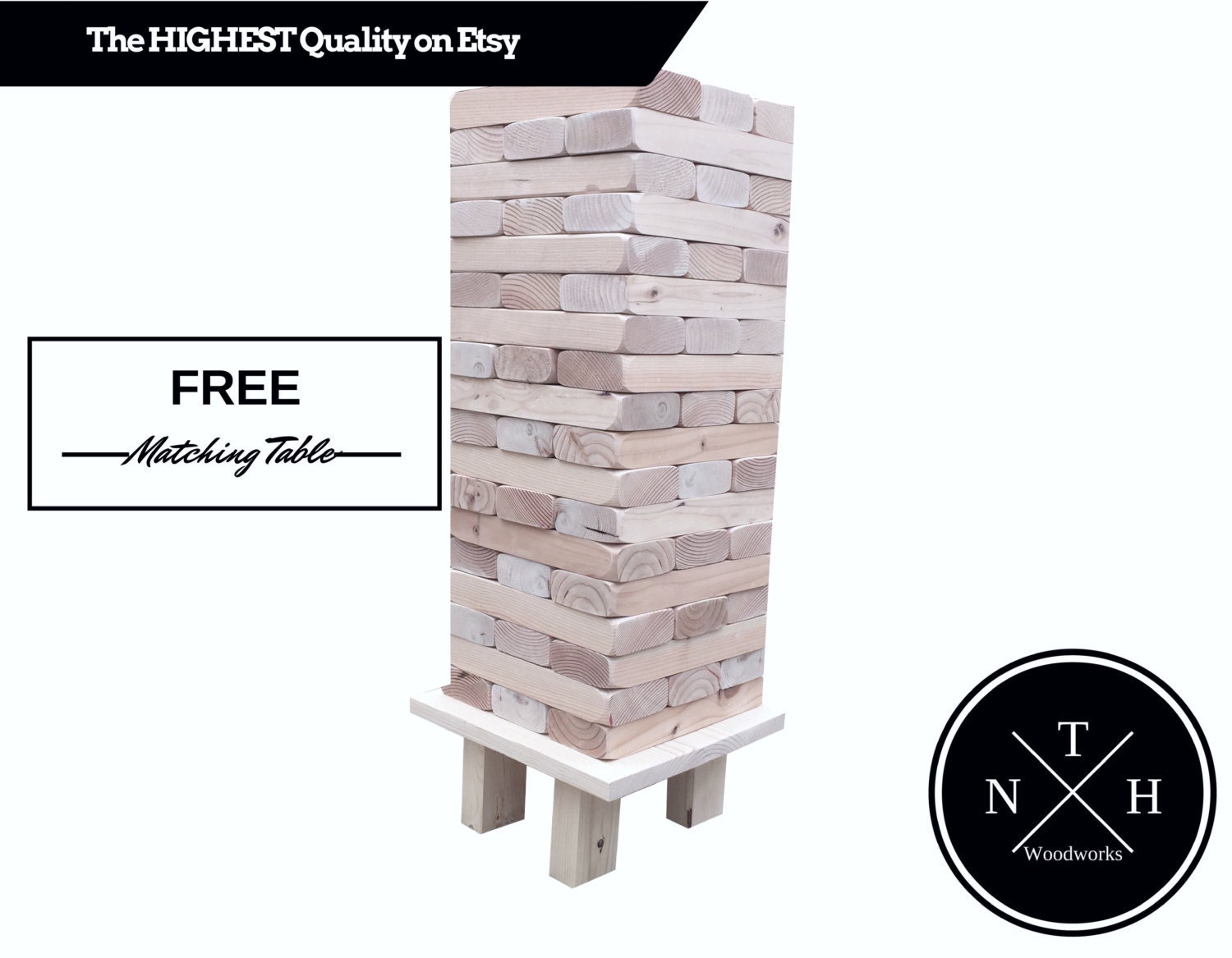

Since the blocks are taken from wood, the grain lines are very hard to achieve a uniform smooth surface with many external factors. The block dimensions are different because of machine error, natural surface from which a piece is taken and how moisture affects the wood grain.Ī Jenga game cannot have uniform blocks even if the manufacturing machine is designed to give precise cuts. In the game Jenga, all blocks look similar, but they vary microscopically in their dimensions. It’s always fun when a player forces their opponent to topple a five foot tower of a jumbo Jenga blocks. The volume of a jumbo Jenga block is eight times compared to a regular Jenga block, making it more fun to play with.

In cm, its dimension is 3cm by 5cm by 15.25cm, and in inches 1.18 in by 1.96 inches by 2.95 inches.

Jumbo Jenga blocks are twice as big as a regular Jenga blocks. These deviations are a result of machine error, the wood grain and even humidity or exposure to moisture. The block is three times longer than its width, and one-fifth thick as its length.Īlthough Jenga blocks are technically identical, there are minor deviations in the dimensions that are unique to each piece. Jenga block dimension in inchesĪ standard Jenga block is 0.59 inches by 0.98 inches by 2.95 inches. These random variations create imperfections during the stacking process that make the tower unstable, thus making the game more challenging. What size is a regular Jenga block?Įach of the 54 pieces are cut to form rectangular blocks with a thickness of one-fifth of its length, and the length of each block is three times the size of its width. When expressed in cm, the size of a Jenga block according to official Jenga rules are 1.5cm × 2.5cm × 7.5cm or 0.59 × 0.98 × 2.95 when expressed in inches.īlocks are small, with slight variations from the original dimensions. No matter what, there are subtle variations making the tower’s construction a significant factor in gameplay. In addition, same size blocks don’t leave gaps in between making it more stable.Īs the weight of the tower shifts, the pressure on blocks loosen up slightly making them easier to remove, even if you can only use one hand. With equal sizes, the weight is relatively the same, thus equally distributed. One of the factors that cause a Jenga tower to fall is the variation of weight acting on the tower as the base support weakens and the weight becomes off balance, especially when the tower becomes taller. When the blocks have the same size, their corresponding weight is relatively the same because they are made from the same hardwood material. Thus, the tower is more stable and gameplay is more strategic. The lines of symmetry correspond to the blocks on top and below because their center of gravity act on the same point. The tower is built would be symmetrical or regular with all the pieces perfectly in line. When pieces are cut perfectly with the same shape and size, the gameplay is more precise and rules are easier to establish and follow. Why is it important to have pieces that are all the same size? Nothing is exact!Įven if the machine is set to produce accurate blocks, wood surfaces will definitely vary because of the natural occurrence and grain lines. Answered below are frequently asked questions about Jenga blocks being the same size and what may affect the size of the block. However, there exists a slight difference in thickness due to machine error or the difference in the wood surface. Even the machine has a certain tolerance of accuracy that ranges from 10 to 100 microns, therefore it is not possible to get a perfect cut.įurthermore, the wood surface cannot be uniformly flat for all 54 pieces as humidity and moisture can affect each piece by varying degree in small dimensions.īlocks in Jenga are supposed to be the same, both in size and shape.

However, the difference between these blocks can come in as a result of manufacturing errors. Jenga blocks do not vary much because all the blocks are duplicates of a manufactured block cut by machine. So, are all the blocks in Jenga the same? Each Jenga block is designed such that its length is three times its width. The slight shift in weight could be the reason for a lack of symmetry between the blocks, resulting in loose pieces that are easy to slide out. However, it’s essential to understand that the tower’s weight may vary as the height continues to rise high. Someone can argue that fact is based on loose blocks that are not symmetric whenever the tower is built. If someone has ever played Jenga, it’s easy to conclude that the block dimensions may vary ever so slightly. There might be slight manufacturing errors, especially in the measurements, when dealing with the number of pieces in a set. Jenga game has 54 blocks specifically made of a hardwood block.


 0 kommentar(er)
0 kommentar(er)
